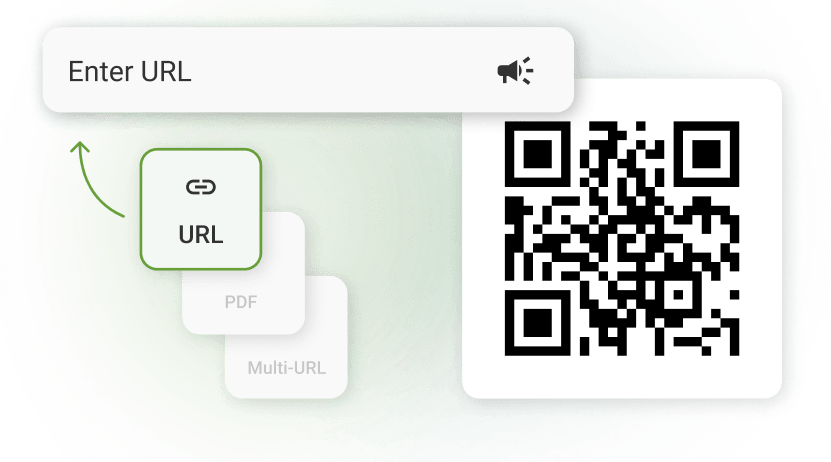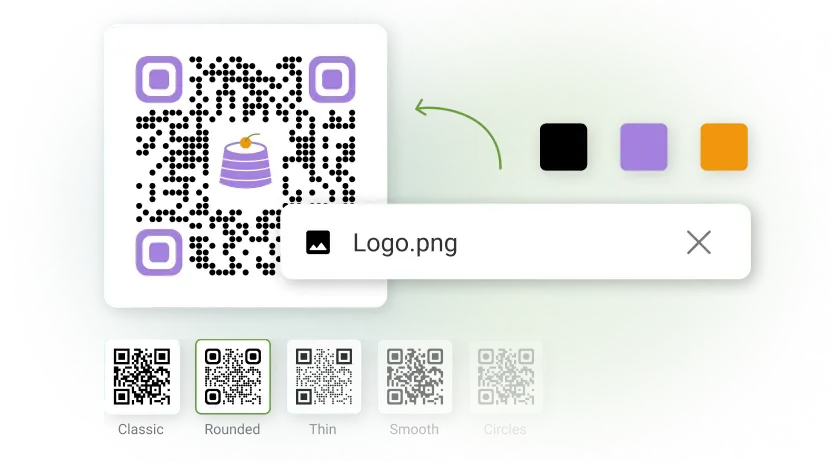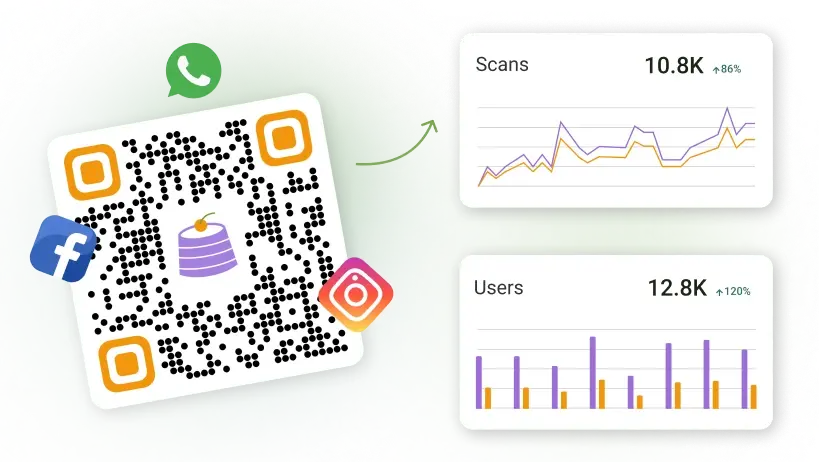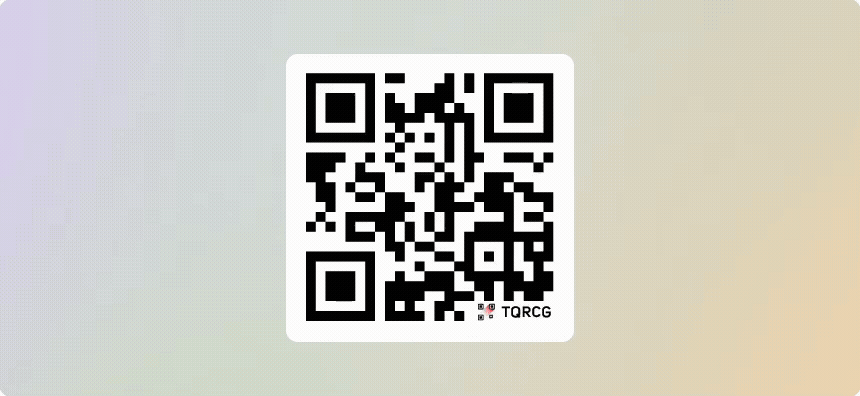With over 17 million active users and 300,000 organizations relying on it worldwide, SurveyMonkey is one of the most popular survey platforms today. Every day, more than 2 million people take surveys on the platform, contributing to a staggering 84 billion questions answered so far.
One of the easiest ways to boost survey participation is by using QR codes, allowing respondents to access surveys instantly with a simple scan. In this blog, we will cover everything you need to know about SurveyMonkey QR codes—what they are, how to generate them, their benefits, and creative ways to distribute your surveys for maximum engagement.
What is a SurveyMonkey QR Code?
A SurveyMonkey QR code is a scannable code that links directly to a SurveyMonkey survey, allowing respondents to access and complete the survey instantly using their mobile devices. It is automatically generated when you create a Web Link collector in SurveyMonkey’s “Collect Responses” section (available to paid users only). Users can also create a QR Code for their survey link using an online QR code generator.
How to generate a QR Code for your surveys on SurveyMonkey
Here is how to generate a QR code for your survey on SurveyMonkey:
- Log in to SurveyMonkey: Go to SurveyMonkey and sign in to your account.
- Select your survey: From the dashboard, click on the survey you want to share.
- Go to the “Collect Responses” section: Click on the “Collect Responses” tab at the top of the page.
Note: SurveyMonkey gives you the option to choose their services to collect responses from the demographics you select.
You can select “Send surveys your way” to get the web link or QR Code for your survey.

- Choose “Web Link” as the collector type: Click on “Create New Collector” and select “Web Link” as the response collection method.

- Find the QR code: Once the web link is generated, SurveyMonkey will automatically create a QR code for your survey.
- Download the QR code: Click on the QR code icon, then download it as a PNG file.

Note: You’ll have to upgrade to a paid plan to be able to download the QR Code for your survey.
Alternatively, you can copy your survey’s web link and use an online QR code generator to create the QR for your survey. Here are the steps you can follow.
- Login to The QR Code Generator App.
- Click on “Create QR Code” on the dashboard.
- You’ll see the URL QR type is selected by default. (If not, select the URL type)
- Paste your survey’s web link (copied from the SurveyMonkey platform) in the input field and click “Next.”

- Customize your QR Code to add logos, colors, frames, etc. After you’ve customized your QR code to suit your brand’s personality, click on “Save.”

- Download your QR Code in the PNG or SVG format to print it on flyers, posters, and business cards, or embed it in emails and social media posts for easy access.

You can also upgrade to a paid plan to track how many people scan your QR code, from where, and from which devices. Or you can also experience the features for 14 days for free and then upgrade to track your campaign performance.
Benefits of using QR Codes for survey forms
Using QR codes for survey distribution can significantly increase response rates and improve accessibility. Here’s why:
1. Easy access and convenience
- One scan, instant access: No need to type URLs or download apps.
- Mobile-friendly: Most people access surveys on their phones, and QR codes make it effortless.
2. Wider reach
- Print and digital use: Place QR codes on posters, flyers, emails, receipts, or product packaging.
- Offline-to-online connection: QR codes bridge physical locations (events, stores, public spaces) with digital surveys.
3. Better engagement and higher response rates
- Reduced friction: Scanning a QR Code takes less effort than manually entering a link.
- Curiosity factor: People are more likely to engage when they see a QR code on a relevant item.
4. Improved data collection and tracking
- Custom tracking: Use different QR codes for different locations to track response patterns.
- Real-time updates: Change the survey link behind the QR code without reprinting materials.
5. Cost-effective and eco-friendly
- Save on printing costs: No need for lengthy paper surveys.
- Sustainable solution: Less paper waste and a more environmentally friendly approach.
Creative ways to distribute your surveys
There are several effective methods for distributing surveys, each catering to different audiences and contexts. Here are some key options, including but not limited to QR codes:
1. QR codes
- Place QR codes on posters, flyers, business cards, receipts, or product packaging.
- Embed QR codes in emails, websites, and social media posts for quick mobile access.
- Use at events, conferences, and public spaces to reach a live audience.
2. Email surveys
- Send survey links via email to existing contacts and subscribers.
- Personalize emails to increase response rates.
- Use email automation to follow up with non-responders.
3. Website and landing pages
- Embed the survey on your website or a dedicated landing page.
- Use pop-ups, banners, or exit-intent triggers to encourage participation.
- Optimize for mobile users to improve accessibility.
4. Social media
- Share survey links on platforms like LinkedIn, Facebook, Twitter, and Instagram.
- Use paid ads to target specific audiences.
- Create engaging posts with visuals and call-to-action messages.
5. SMS and messaging apps
- Send surveys via SMS for quick responses.
- Distribute links through WhatsApp, Telegram, or Messenger groups.
- Keep messages short and engaging to encourage participation.
6. In-person and printed materials
- Distribute paper surveys at events, meetings, or community centers.
- Include links or QR codes on brochures, posters, or business cards.
- Train staff or volunteers to collect responses on tablets or mobile devices.
7. Online communities and forums
- Post surveys in relevant online groups, discussion boards, and industry forums.
- Engage with community members to encourage participation.
- Use niche platforms that align with your target audience.
8. Partnerships and influencers
- Collaborate with NGOs, businesses, or influencers to share your survey.
- Leverage partner email lists or social media channels for wider reach.
- Offer incentives or exclusive insights for participants.
9. Mobile apps and push notifications
- If you have an app, integrate surveys within the user experience.
- Push notifications can be used to remind users to complete the survey.
- Offer incentives such as discounts, points, or exclusive content.
10. Embedded in digital receipts and invoices
- Add survey links or QR codes to e-receipts and invoices.
- Encourage feedback right after a transaction for higher response rates.
Frequently asked questions
No, QR code generation is available on all plans, including the free version. However, some advanced tracking features may require a paid plan.
SurveyMonkey does not offer built-in customization options for QR codes. If you want to change colors or add a logo, try an online QR Code generator.
SurveyMonkey allows you to download the QR code in PNG format. If you need an SVG or higher resolution, you may need to convert the file using an external tool or use The QR Code Generator.
Yes, but it is important to maintain the clarity and contrast of the QR code. If resizing, test it on different devices to ensure it remains scannable.
You can print it on flyers, posters, business cards, receipts, or event banners. It can also be embedded in emails, social media posts, and websites.
No, the QR code does not expire as long as the survey remains active. However, if you delete or close the survey, the QR code will no longer work.
Editing the survey will not affect the QR code. It will still direct respondents to the latest version of your survey.
SurveyMonkey does not offer built-in QR code tracking. However, you can track survey responses by enabling SurveyMonkey’s response tracking features or using a third-party QR code generators with QR Code tracking capabilities.
Yes, if you create a new survey link, you will need to generate a new QR code. The existing QR code remains tied to the original survey link.
However, if you’ve created a dynamic QR code using The QR Code Generator, you can change the survey link without changing the QR code.
Yes, SurveyMonkey surveys are mobile-responsive and will adjust to different screen sizes when accessed via a QR code.
Ensure the QR code is printed clearly and is large enough to be scanned easily. Test it on different devices before distributing it. If issues persist, provide an alternative survey link. Here’s more information on troubleshooting QR code scannability issues.










 No credit card required
No credit card required